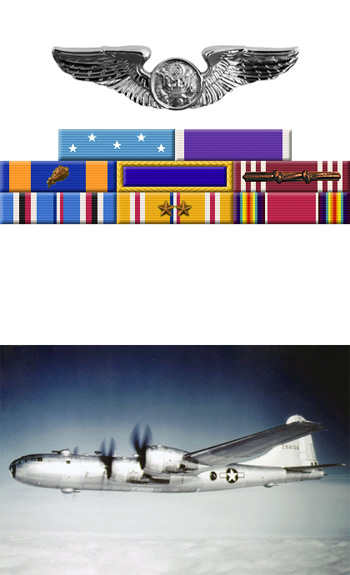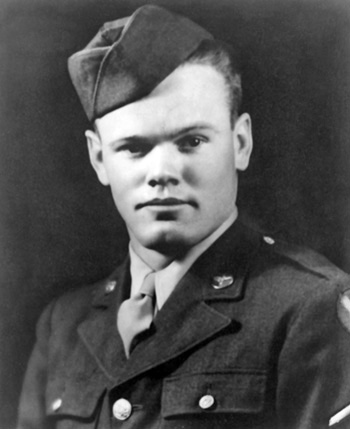
|
Henry E. Erwin, Sr. |
 |
|||
| Rank, Service | ||||
Master Sergeant, U.S. Air Force |
||||
| Veteran of: | ||||
|
||||
| Tribute: | ||||
Red Erwin was born on May 8, 1921, in Adamsville, Alabama. He enlisted in the U.S. Army Reserve on July 27, 1942, and entered the Aviation Cadet Program of the U.S. Army Air Forces on February 3, 1943. After being eliminated from pilot training, PFC Erwin was assigned to the 603rd Training Group at St Petersburg, Florida, from June to July 1943, and then to the 305th Technical School at Keesler Field, Mississippi. He then completed the Radio Operator and Mechanic School at Sioux Falls, South Dakota, in February 1944, followed by advanced training at Truax Field, Wisconsin, in April 1944. His next assignment was as a B-29 Superfortress radio operator with the 52nd Bomb Squadron of the 29th Bomb Group at Dalhart, Texas, from April 1944 to February 1945, and then deployed to the Pacific Theater from February 1945 until he was badly injured while flying his 11th combat mission aboard the B-29 "City of Los Angeles" on April 12, 1945, during a mission in which he would later be awarded the Medal of Honor. After undergoing many surgeries for his burns, he received an honorable discharge on October 8, 1947. He and his wife Betty were married on December 6, 1944, and had one son and three daughters together-Hank, Bette, Nancy, and Karen; as well as eight grandchildren and five great-grandchildren. Red Erwin served with the Veterans Administration for over 30 years after leaving active duty, and died on January 16, 2002. He was buried at the Elmwood Cemetery in Birmingham, Alabama. His son, Hank Erwin, has served as an Alabama state senator since 2002. |
||||
|
||||

